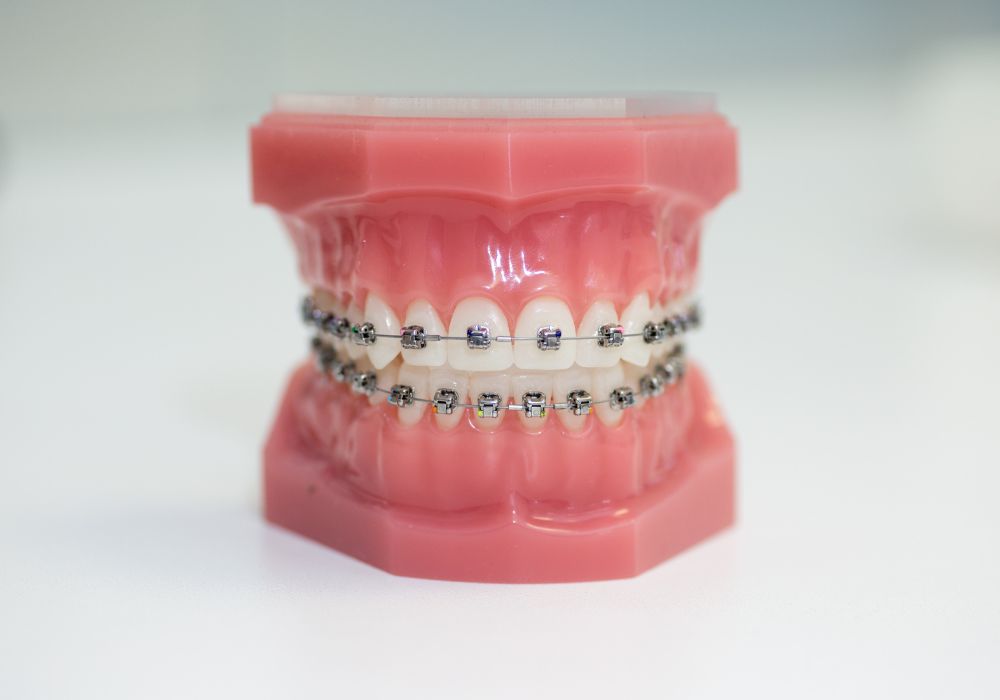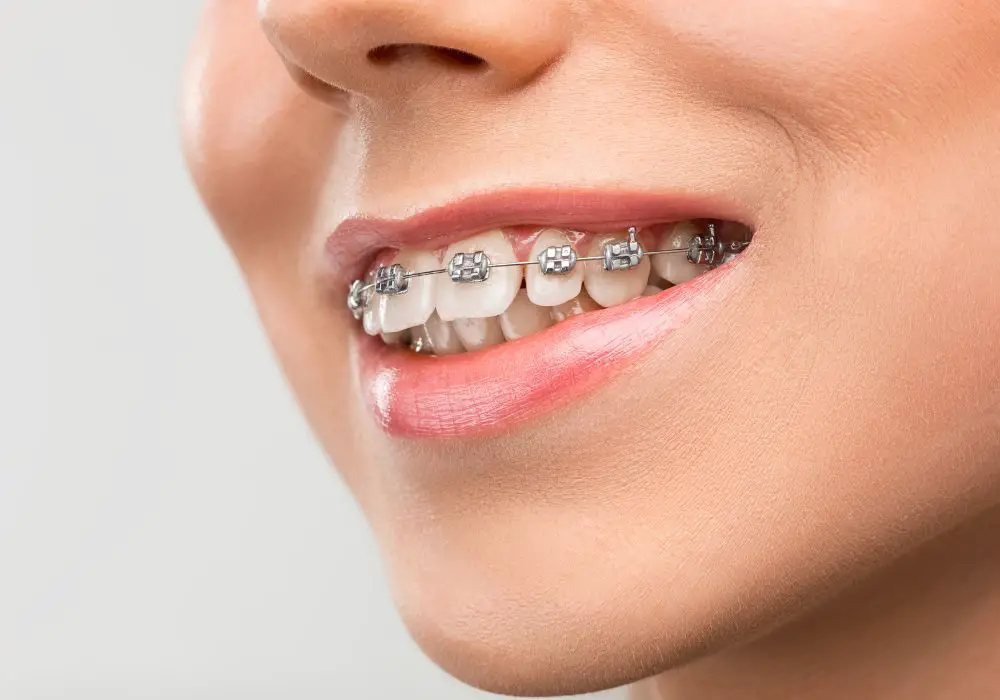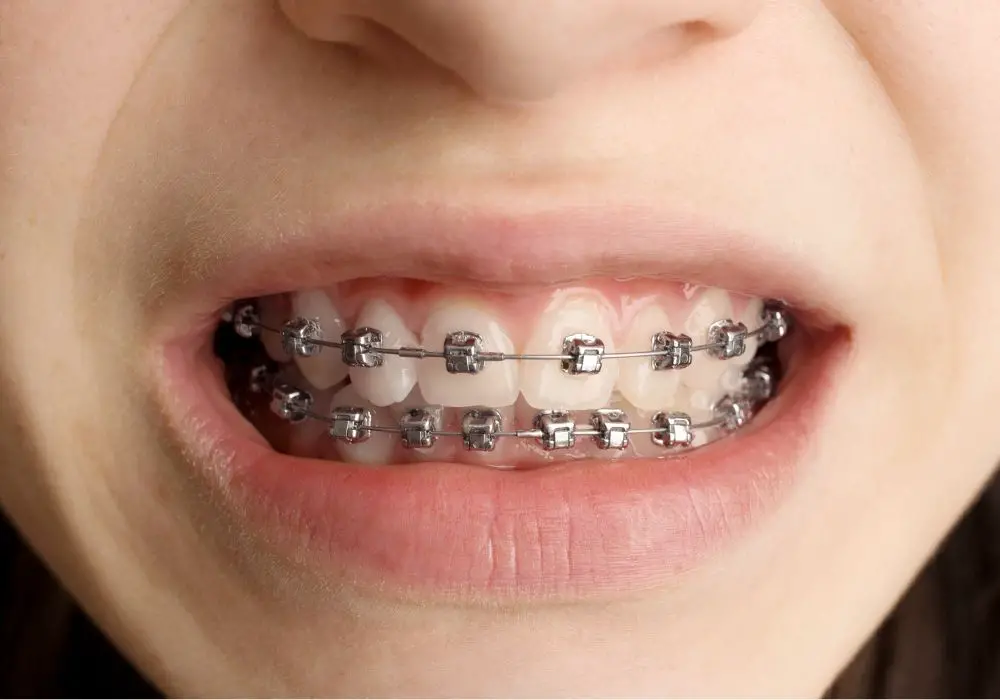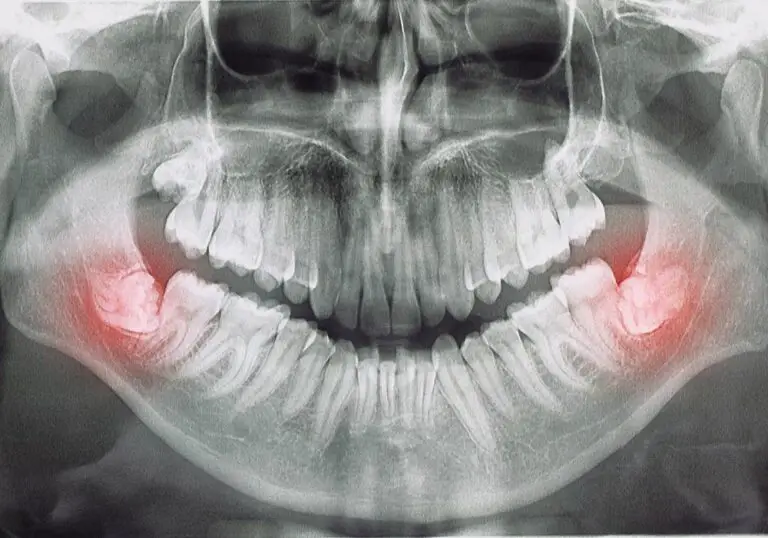Are you considering getting braces to straighten your teeth? You may be wondering how exactly braces work to move teeth into their proper position. The answer lies in the brackets that are attached to your teeth.
Brackets are small, square-shaped pieces that are cemented onto the front of each tooth. They serve as anchors for the wires that run through them. The wires are tightened periodically to apply pressure to the teeth and gradually move them into the desired position. This process can take several months to a few years, depending on the severity of your misalignment.
Understanding Brackets in Orthodontics

When you get braces, brackets are an essential part of the treatment. They are small metal or ceramic pieces that are affixed to your teeth and hold the archwires in place. In this section, we will discuss the role of brackets in orthodontics and how they work to move your teeth.
How Brackets Work
Brackets are a crucial component of braces, and they play a significant role in moving your teeth. They are attached to the front of your teeth using a special adhesive, and they hold the archwires that apply pressure to your teeth. The archwires are what actually move your teeth and guide them into the proper position.
Brackets work by holding the archwires in place and providing a point of attachment for elastics or rubber bands. The elastics are used to apply additional force to your teeth, which helps to move them more quickly and efficiently.
Types of Brackets
There are several types of brackets available in orthodontics. The most common are metal brackets, which are made of stainless steel. Ceramic brackets are also available, which are tooth-colored and less noticeable than metal brackets.
Self-ligating brackets are another type of bracket that is becoming more popular in orthodontics. These brackets do not require elastics or rubber bands to hold the archwires in place, which can make treatment more comfortable and efficient.
Caring for Brackets
Taking care of your brackets is essential to ensure that your treatment is successful. You should avoid eating hard, sticky, or chewy foods that can damage your brackets or wires. Brushing and flossing regularly is also crucial to maintain good oral hygiene and prevent cavities or gum disease.
If a bracket becomes loose or falls off, you should contact your orthodontist as soon as possible. They will be able to reattach the bracket and ensure that your treatment continues as planned.
In summary, brackets are an essential part of orthodontic treatment. They work by holding the archwires in place, applying pressure to your teeth, and helping to guide them into the proper position. There are several types of brackets available, and taking care of them is crucial to ensure that your treatment is successful.
How Brackets Move Teeth
When you get braces, the brackets are attached to your teeth with a special dental adhesive. But how do they actually move your teeth? Here’s a breakdown of the process:
The Role of Archwire
Archwires are thin, metal wires that connect each bracket to the next. They are responsible for applying pressure to your teeth, which gradually moves them into the desired position. The archwire is adjusted periodically by your orthodontist to keep the pressure consistent and ensure your teeth continue to move.
The Process of Bone Remodeling
As your teeth move, the bone around them changes shape to accommodate their new position. This process is called bone remodeling. It happens as a result of pressure being applied to the teeth through the archwire and brackets.
On the side of the tooth where pressure is applied, the periodontal ligament (the fibrous tissue that connects the tooth to the bone) stretches. On the opposite side, the ligament compresses. This causes the tooth to loosen slightly in its socket. New bone tissue then grows in the space created by the compressed ligament, anchoring the tooth in its new position.
It’s important to note that bone remodeling is a slow process. It can take several months or even years for your teeth to move into their final position. That’s why it’s important to follow your orthodontist’s instructions and attend all of your scheduled appointments.
Types of Brackets and Their Impact on Tooth Movement

When it comes to orthodontic treatment, brackets play a crucial role in moving your teeth into the desired position. There are several types of brackets available, each with its own benefits and drawbacks. Here’s a look at the most common types of brackets and how they impact tooth movement:
Metal Brackets
Metal brackets are the most common type of brackets used in orthodontic treatment. They are made of high-grade stainless steel and are known for their durability and strength. Metal brackets are also the most visible type of bracket, which may be a concern for some patients. However, they are also the most cost-effective option.
Ceramic Brackets
Ceramic brackets are made of clear or tooth-colored materials, making them less noticeable than metal brackets. They are a popular choice for patients who want a more discreet option. However, ceramic brackets are more fragile than metal brackets and may require more frequent adjustments.
Self-Ligating Brackets
Self-ligating brackets are a newer type of bracket that uses a built-in clip to hold the wire in place, eliminating the need for elastic ties. This can reduce friction and pressure on the teeth, resulting in more comfortable treatment. Self-ligating brackets also require fewer adjustments, which can shorten treatment time.
Lingual Brackets
Lingual brackets are placed on the back of the teeth, making them virtually invisible from the front. They are a popular choice for patients who want a discreet option but don’t want to use clear aligners. However, lingual brackets can be more difficult to clean and may cause more discomfort than other types of brackets.
Each type of bracket has its own benefits and drawbacks, and the right choice for you will depend on your individual needs and preferences. Your orthodontist can help you choose the best option for your treatment.
Duration of Treatment with Brackets
Braces are a common orthodontic treatment used to straighten teeth and correct bite problems. Brackets are the most visible part of braces, and they play a crucial role in moving teeth into their proper position. If you’re considering braces, you may be wondering how long you’ll need to wear them. The duration of treatment with brackets can vary depending on several factors.
Factors Affecting Treatment Time
The length of time you’ll need to wear brackets depends on several factors, including:
- The severity of your orthodontic issues
- The type of brackets you choose
- Your age and oral health
- Your compliance with the treatment plan
Orthodontic issues can vary widely in terms of severity. Some patients may only need minor adjustments, while others may require more extensive treatment. The type of brackets you choose can also affect the length of treatment. Traditional metal brackets are the most common type, but there are also ceramic and clear options available. Ceramic and clear brackets are less noticeable than metal ones, but they may require longer treatment times. Your age and oral health can also play a role in the duration of treatment. Younger patients may have faster treatment times than older patients, and patients with good oral health may have shorter treatment times as well. Finally, your compliance with the treatment plan is essential. Following your orthodontist’s instructions and attending regular appointments can help ensure that your treatment progresses as planned.
Average Treatment Time
On average, treatment with brackets can take anywhere from 18 to 36 months. However, the length of treatment can vary widely depending on the factors mentioned above. Your orthodontist will be able to give you a more accurate estimate of your treatment time after evaluating your orthodontic issues and discussing your treatment goals with you.
Conclusion
In conclusion, the duration of treatment with brackets can vary depending on several factors, including the severity of your orthodontic issues, the type of brackets you choose, your age and oral health, and your compliance with the treatment plan. On average, treatment with brackets can take anywhere from 18 to 36 months. If you’re considering braces, be sure to discuss your treatment goals and concerns with your orthodontist to get a better idea of what to expect.
Potential Risks and Complications

While braces are generally safe, there are some potential risks and complications associated with them. It’s important to be aware of these risks so that you can make an informed decision about whether braces are right for you.
Tooth Decay
Braces can make it more difficult to keep your teeth clean, which can increase your risk of tooth decay. Food particles can become trapped in the brackets and wires, and it can be difficult to clean these areas properly. As a result, you may be more likely to develop cavities while wearing braces.
To reduce your risk of tooth decay, it’s important to brush your teeth thoroughly after every meal and to floss regularly. Your orthodontist may also recommend using a mouthwash to help kill bacteria and prevent tooth decay.
Gum Disease
Braces can also increase your risk of gum disease. When food particles become trapped in the brackets and wires, they can irritate the gums and cause inflammation. This can lead to gum disease if left untreated.
To reduce your risk of gum disease, it’s important to practice good oral hygiene while wearing braces. This includes brushing your teeth thoroughly after every meal, flossing regularly, and using a mouthwash to help kill bacteria.
Root Resorption
Root resorption is a rare but serious complication of braces. It occurs when the roots of the teeth begin to break down, which can lead to tooth loss.
While the risk of root resorption is low, it’s important to be aware of this potential complication. Your orthodontist will monitor your teeth closely during treatment to ensure that root resorption does not occur.
Allergic Reactions
Some people may be allergic to the materials used in braces, such as nickel or latex. If you have a known allergy to these materials, be sure to inform your orthodontist before starting treatment.
If you develop an allergic reaction while wearing braces, such as a rash or swelling, contact your orthodontist immediately. They may need to remove the braces and replace them with a different type of appliance.
Discomfort and Irritation
Braces can be uncomfortable and may cause irritation to the gums and cheeks. This is especially true during the first few days of treatment, as your mouth adjusts to the new appliances.
To reduce discomfort and irritation, your orthodontist may recommend using orthodontic wax to cover the brackets and wires. You can also take over-the-counter pain relievers, such as ibuprofen, to help manage any discomfort.
Overall, while braces do come with some potential risks and complications, they are generally safe and effective for straightening teeth. By practicing good oral hygiene and following your orthodontist’s instructions, you can minimize your risk of complications and achieve a healthy, beautiful smile.
Frequently Asked Questions
How do braces work for crowded teeth?
Braces work by exerting a constant pressure on your teeth and jaws through brackets and archwires, which gradually move your teeth into the desired position. For crowded teeth, the braces will apply pressure to push the teeth apart and create space for each tooth to move into its proper position.
How much do braces move teeth each month?
The amount of movement varies depending on the individual case, but on average, braces can move teeth about 1mm per month. However, it is important to note that the speed of movement can be affected by factors such as age, the severity of the dental issue, and the type of braces used.
How much do braces cost?
The cost of braces can vary depending on several factors, including the type of braces, the length of treatment, and the location of the dental practice. On average, traditional metal braces can cost between $3,000 to $7,000, while newer options such as clear aligners may cost more.
Do braces hurt?
Braces may cause some discomfort or soreness when they are first put on and after adjustments, but this is usually mild and can be managed with over-the-counter pain medication. However, if you experience severe pain or discomfort, contact your orthodontist.
What do braces do to your jaw?
Braces can help correct a misaligned jaw by applying pressure to the teeth and jawbone, which can gradually shift the position of the jaw. This can improve the alignment of your bite and reduce the risk of developing dental issues such as TMJ disorders.
Will your teeth shift if you break a bracket?
If a bracket breaks or comes loose, it can affect the pressure being applied to your teeth, which can cause them to shift out of position. It is important to contact your orthodontist as soon as possible to have the bracket repaired or replaced to prevent any further dental issues.







